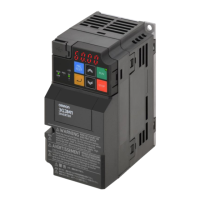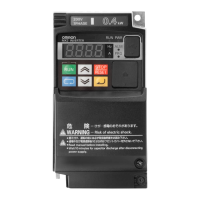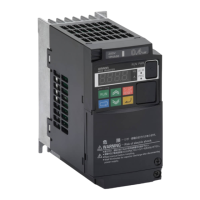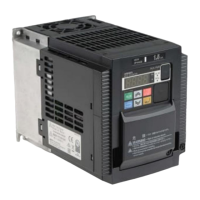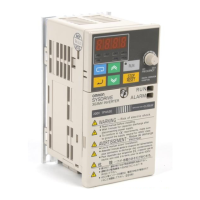• The power supply capacity is at least 10 times larger than the inverter capacity and, at the same
time, 500 kVA or more.
•
Rapid change in the power supply voltage occurs.
Example) When the phase advance capacitor is turned ON/OFF, the inverter may detect an over-
voltage or the rectifier may be damaged.
Installing input surge absorber
When using an inductive load (such as a magnetic contactor, magnetic relay, magnetic valve, sole-
noid, or electromagnetic brake), use a surge absorber or diode together.
Installing input noise filter
The inverter performs high-speed output switching, which may cause the noise flow from the inver-
ter to power supply lines that negatively affects on peripheral equipment.
Therefore, it is recommended to use an input noise filter to reduce noise flowing out to power sup-
ply lines.
This also helps reduce noise that enters the inverter from power supply lines.
M
MC
MCCB
Input noise filter for inverter (for general use)
Inverter
Other control equipment
3G3M1 Series
CS/CJ Series
Noise filter
Three-phase 200 VAC
Three-phase 400 VAC
Power
supply
Wiring for Ground Terminal (G )
To prevent electric shock, be sure to ground the inverter and the motor.
The 200-V class should be connected to the ground terminal under type-D grounding conditions (con-
ventional type 3 grounding conditions: 100 Ω
or less ground resistance), the 400-V class should be
connected to the ground terminal under type-C grounding conditions (conventional special type 3
grounding conditions: 10 Ω or less ground resistance).
For the ground cable, use the applicable cable or a cable with a larger diameter. Make the cable
length as short as possible.
When several inverters are connected, the ground cable must not be connected across several inver-
ters or looped. Otherwise, the inverters and peripheral control equipment may malfunction.
2 Design
2-52
M1 Series EtherCAT Type User’s Manual (I670)

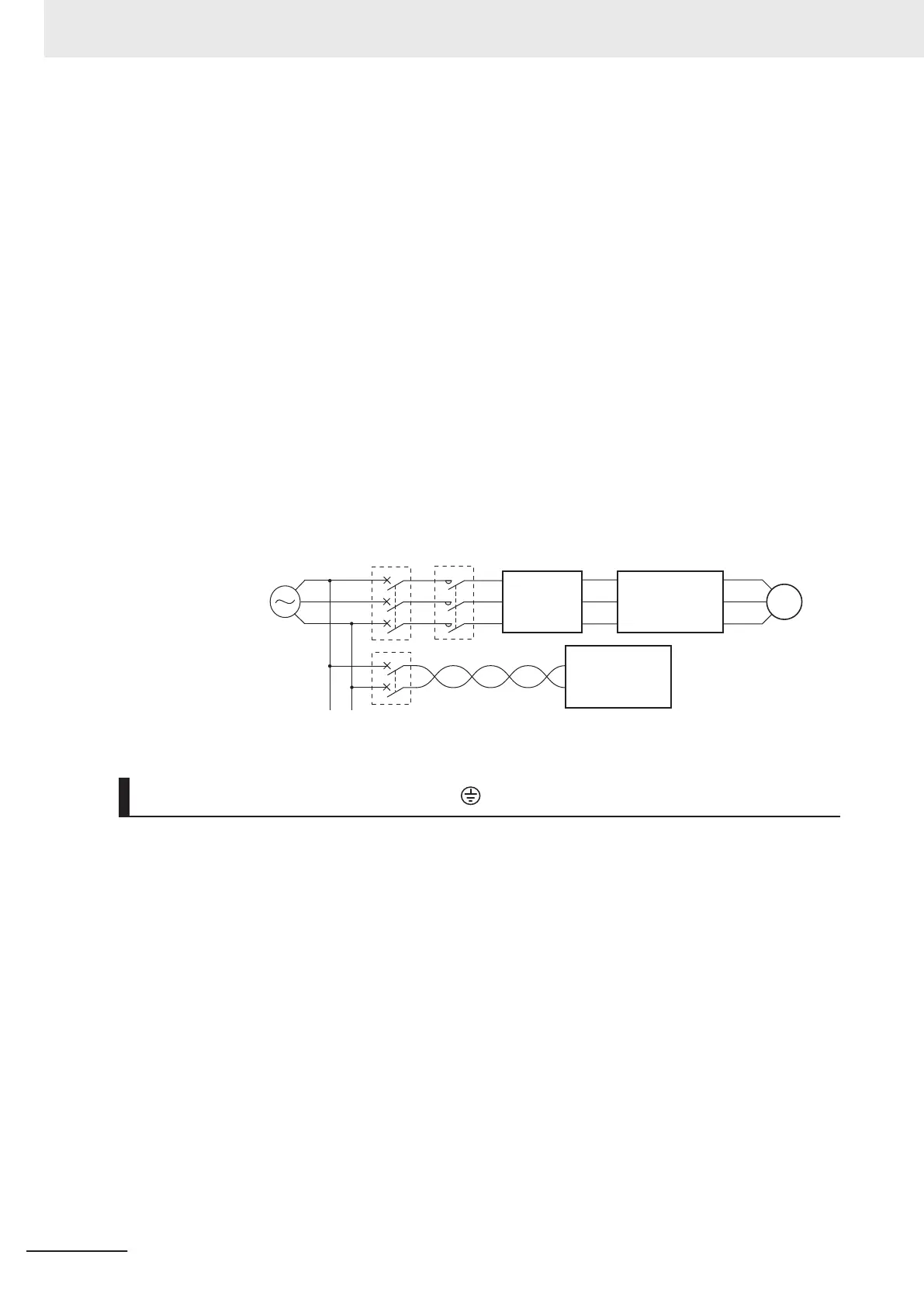